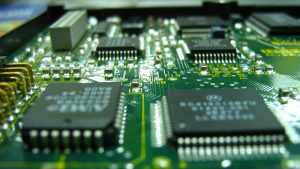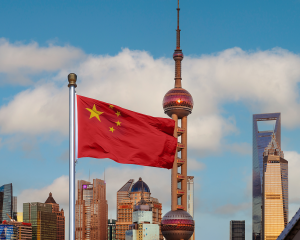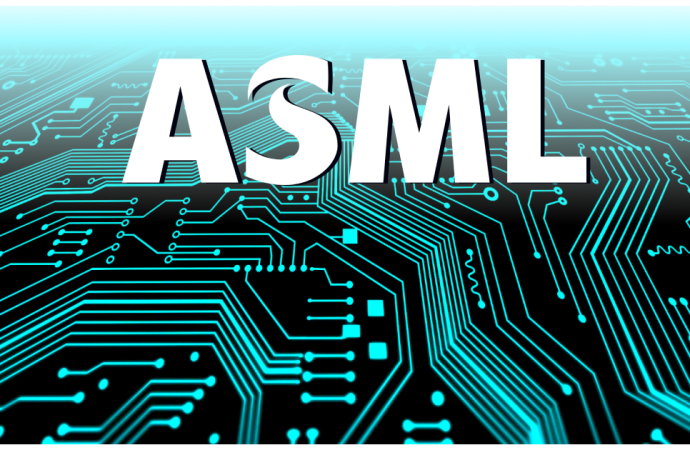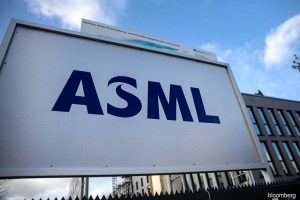ASML’s Dilemma: Comply with US Restrictions or Lose China Market Introduction Hi, I’m Fred Wilson, a freelance writer and a tech enthusiast. I have been following the developments in the semiconductor industry for over a decade, and I have witnessed how ASML has become one of the most important players in the global chip supply
ASML’s Dilemma: Comply with US Restrictions or Lose China Market
Introduction
Hi, I’m Fred Wilson, a freelance writer and a tech enthusiast. I have been following the developments in the semiconductor industry for over a decade, and I have witnessed how ASML has become one of the most important players in the global chip supply chain. ASML is the only company in the world that makes extreme ultraviolet lithography (EUV) machines, which are essential for producing the most advanced chips in the world. These chips are used to power everything from smartphones to military hardware, and they are at the center of a bitter dispute between the US and China.
The US-China Chip War
The US and China have been locked in a fierce competition over technological supremacy, especially in the field of semiconductors. The US accuses China of stealing intellectual property, subsidizing its domestic chip industry, and posing a national security threat. China, on the other hand, accuses the US of trying to stifle its technological development and innovation. The US has imposed various sanctions and restrictions on Chinese chipmakers, such as Huawei and SMIC, to limit their access to advanced chips and chipmaking equipment. The US has also pressured its allies, such as the Netherlands and Japan, to adopt similar measures.

Image by Cristian Ibarra from Pixabay
ASML’s Role and Challenges
ASML is a key supplier to the global chip industry, as it is the only company in the world that makes extreme ultraviolet lithography (EUV) machines, which are essential for producing the most advanced chips in the world. These chips are used to power everything from smartphones to military hardware, and they are at the center of a bitter dispute between the US and China.
The US and China have been locked in a fierce competition over technological supremacy, especially in the field of semiconductors. The US accuses China of stealing intellectual property, subsidizing its domestic chip industry, and posing a national security threat. China, on the other hand, accuses the US of trying to stifle its technological development and innovation. The US has imposed various sanctions and restrictions on Chinese chipmakers, such as Huawei and SMIC, to limit their access to advanced chips and chipmaking equipment. The US has also pressured its allies, such as the Netherlands and Japan, to adopt similar measures.
ASML, a Dutch firm, has been caught in the crossfire of the US-China chip war. ASML has been restricted from selling its most advanced EUV machines to China since 2019, due to the Dutch government’s refusal to grant export licenses under US pressure. However, ASML still sells other types of lithography machines to China, which account for a significant portion of its revenue and growth potential. China is ASML’s second-largest market, after Taiwan, and it is expected to become the largest in the future. ASML has invested heavily in China, building a factory, a training center, and a research and development facility. ASML also has many Chinese customers, suppliers, and employees.
However, ASML’s business in China has become increasingly difficult and risky, due to the US’s latest export rules that came into effect in October 2023. These rules require US persons, including US citizens, green card holders, and foreign nationals living in the US, to obtain a license before providing any services or support to certain Chinese chipmakers, including those that use ASML’s machines. These rules also apply to non-US persons who use US-origin technology or software to assist Chinese chipmakers. ASML has many US persons among its staff, as well as US-origin technology and software in its products. Therefore, ASML has to comply with these rules or face severe penalties from the US government, such as fines, sanctions, or criminal charges.
ASML’s Dilemma: Comply with US Restrictions or Lose China Market
This puts ASML in a dilemma: should it continue to do business with China, risking the wrath of the US and potentially losing its access to the US market and technology? Or should it cut off its ties with China, sacrificing its revenue and growth prospects, and alienating its Chinese customers and partners? How will ASML balance its economic interests with its ethical responsibilities, and what will be the implications for its reputation and profitability?
There are pros and cons of doing business with China, as well as possible scenarios and outcomes of ASML’s decision. ASML has to weigh the benefits and costs of each option, and consider the impact of its actions on its stakeholders and the society at large. ASML also has to communicate and justify its decision, to its internal and external audiences, and to the public and the media. ASML’s decision will not only affect its own fate, but also the fate of the global chip industry and the world at large
The Pros and Cons of Doing Business with China
ASML has several reasons to maintain its business relationship with China, despite the US pressure and restrictions. Some of the pros of doing business with China are:
- China is a huge and growing market for ASML’s products and services. China is the world’s largest consumer and importer of semiconductors, and it has ambitious plans to become self-reliant and competitive in chip production. China is expected to spend over $300 billion on its chip industry in the next five years, and it will need ASML’s machines to achieve its goals. ASML has a dominant position in the lithography market, with over 80% market share, and it can benefit from the increasing demand and investment from China.
- China is a valuable partner and stakeholder for ASML. ASML has established a strong presence and network in China, with over 1,000 employees, 60 customers, and 100 suppliers. ASML has also collaborated with Chinese universities and research institutes, such as Tsinghua University and the Chinese Academy of Sciences, to foster innovation and talent development. ASML has received support and recognition from the Chinese government, such as the Friendship Award, the highest honor for foreign experts in China. ASML has also expressed its commitment and respect for China, such as by donating to the COVID-19 relief efforts and celebrating the Chinese New Year.
- China is a source of opportunity and challenge for ASML. ASML has acknowledged that China is not only a market, but also a competitor, as China is developing its own lithography technology and machines. ASML has stated that it welcomes the competition, as it will drive innovation and improvement in the industry. ASML has also said that it is confident in its technological edge and leadership, and that it will continue to invest in research and development to maintain its advantage. ASML has also argued that it is better to engage with China, rather than isolate it, as it will foster mutual understanding and cooperation, and prevent the emergence of a technological divide.
- China is a risky and uncertain market for ASML’s products and services. China is subject to US sanctions and restrictions, which can change at any time and affect ASML’s ability to sell and service its machines in China. ASML also faces legal and regulatory challenges, such as complying with the US export rules, the Chinese cybersecurity law, and the Chinese antitrust law. ASML also faces operational and logistical challenges, such as shipping, installing, and maintaining its machines in China, which can be costly and time-consuming.
- China is a potential threat and adversary for ASML. China has been accused of engaging in industrial espionage, intellectual property theft, and cyberattacks, targeting ASML and its customers and suppliers. China has also been developing its own lithography technology and machines, which could eventually compete with or even surpass ASML’s products. China has also shown a willingness to use its economic and political leverage to pressure or retaliate against foreign firms that do not comply with its interests or demands.
- China is a source of ethical and reputational dilemmas for ASML. ASML has to balance its economic interests with its ethical responsibilities, and consider the impact of its actions on its stakeholders and the society at large. ASML has to weigh the benefits of doing business with China against the costs of potentially enabling human rights violations, military aggression, or environmental degradation. ASML also has to consider the consequences of losing the trust and support of its other customers, partners, and governments, especially in the US and Europe, which are its main sources of technology and innovation.

Image by: https://www.cato.org
ASML’s Decision and Implications
ASML has not yet made a clear and definitive decision on how to deal with its dilemma of doing business with China. ASML has stated that it will abide by the laws and regulations of the countries where it operates, and that it will respect the sovereignty and interests of its customers and partners. ASML has also stated that it will continue to pursue its long-term vision of enabling the semiconductor industry to create a better and smarter world, and that it will act in a responsible and sustainable manner.
However, ASML’s decision will have significant implications for its future, as well as for the global chip industry and the geopolitical landscape. Some of the possible scenarios and outcomes are:
- ASML complies with the US restrictions and stops selling its machines to China. This could result in a loss of revenue and market share for ASML, as well as a deterioration of its relationship with China. ASML could also face a backlash from its Chinese customers, suppliers, and employees, who might feel betrayed or abandoned by ASML. ASML could also lose its competitive edge and innovation potential, as it would miss out on the opportunities and challenges that China offers. On the other hand, ASML could gain the favor and protection of the US and its allies, who might reward ASML with more contracts, subsidies, or incentives. ASML could also enhance its reputation and credibility, as it would demonstrate its commitment to ethical and security standards.
- ASML defies the US restrictions and continues to sell its machines to China. This could result in a boost of revenue and market share for ASML, as well as an improvement of its relationship with China. ASML could also gain the loyalty and appreciation of its Chinese customers, suppliers, and employees, who might feel valued and supported by ASML. ASML could also maintain its competitive edge and innovation potential, as it would benefit from the demand and investment that China provides. However, ASML could face the wrath and punishment of the US and its allies, who might impose fines, sanctions, or bans on ASML. ASML could also damage its reputation and credibility, as it would be seen as aiding and abetting China’s ambitions and actions.
- ASML adopts a middle ground and tries to balance its interests and obligations. This could result in a compromise of revenue and market share for ASML, as well as a mixed relationship with China and the US. ASML could also experience a conflict and confusion of its customers, suppliers, and employees, who might not understand or agree with ASML’s position and strategy. ASML could also face a challenge of maintaining its competitive edge and innovation potential, as it would have to navigate the complex and dynamic environment of the chip industry and the geopolitical situation. However, ASML could also achieve a degree of flexibility and resilience, as it would be able to adapt and adjust to the changing circumstances and expectations.
Conclusion
ASML’s dilemma of doing business with China is not an easy one to solve, as it involves multiple factors and stakeholders, and it has far-reaching consequences. ASML has to make a careful and strategic decision, based on its values, vision, and goals, and taking into account the risks, opportunities, and trade-offs. ASML also has to communicate and justify its decision, to its internal and external audiences, and to the public and the media. ASML’s decision will not only affect its own fate, but also the fate of the global chip industry and the world at large.
























Leave a Comment
Your email address will not be published. Required fields are marked with *